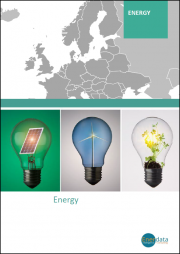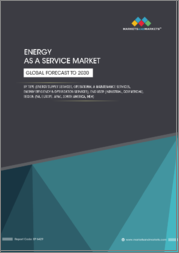
|
시장보고서
상품코드
1609881
일본의 EaaS(Energy as a Service) 시장 보고서 : 서비스 유형, 최종사용자, 지역별(2024-2032년)Japan Energy as a Service Market Report by Service Type (Energy Supply Services, Maintenance and Operation Services, Energy Efficiency and Optimization Services), End User (Commercial, Industrial), and Region 2024-2032 |
||||||
일본의 EaaS(Energy as a Service) 시장의 시장 규모는 2023년에 42억 달러에 달했습니다. 향후 IMARC Group은 시장이 2032년까지 102억 달러에 달하며, 2024-2032년의 성장률(CAGR)은 10.30%에 달할 것으로 예측하고 있습니다. 환경의 지속가능성이 중시되고 있으며, 기준에 대한 준거 및 이산화탄소 배출량의 삭감에 도움이 되는 에너지 솔루션을 채택하는 기업이 증가하고 있는 것이 시장을 촉진하고 있습니다.
본 리포트에서 답변하는 주요 질문
- 일본의 EaaS(Energy as a Service) 시장의 지금까지 실적과 향후 수년간 실적은?
- 일본의 EaaS(Energy as a Service) 시장에 COVID-19가 미친 영향은?
- 일본의 EaaS(Energy as a Service) 시장의 서비스 유형별 내역은?
- 일본의 EaaS(Energy as a Service) 시장의 최종사용자별 내역은?
- 일본의 EaaS(Energy as a Service) 시장의 밸류체인에는 어떤 단계가 있는가?
- 일본의 EaaS(Energy as a Service)에서 주요 촉진요인과 과제는 무엇인가?
- 일본의 EaaS(Energy as a Service) 시장의 구조와 주요 기업은?
- 일본의 EaaS(Energy as a Service) 시장에서 경쟁의 정도는?
목차
제1장 서문
제2장 조사 범위와 조사 방법
- 조사의 목적
- 이해관계자
- 데이터 소스
- 시장 추정
- 조사 방법
제3장 개요
제4장 일본의 EaaS(Energy as a Service) 시장 : 서론
- 개요
- 시장 역학
- 업계 동향
- 경쟁 정보
제5장 일본의 EaaS(Energy as a Service) 시장 구도
- 과거 및 현재 시장 동향(2018-2023년)
- 시장 예측(2024-2032년)
제6장 일본의 EaaS(Energy as a Service) 시장 : 서비스 유형별 내역
- 에너지 공급 서비스
- 유지보수·운영 서비스
- 에너지 효율과 최적화 서비스
제7장 일본의 EaaS(Energy as a Service) 시장 : 최종사용자별 내역
- 상업
- 산업
제8장 일본의 EaaS(Energy as a Service) 시장 : 경쟁 구도
- 개요
- 시장 구조
- 시장 기업 포지셔닝
- 주요 성공 전략
- 경쟁 대시보드
- 기업 평가 상한
제9장 주요 기업의 개요
제10장 일본의 EaaS(Energy as a Service) 시장 : 업계 분석
- 촉진요인·억제요인·기회
- Porter's Five Forces 분석
- 밸류체인 분석
제11장 부록
KSA 24.12.26Japan energy as a service market size reached US$ 4.2 Billion in 2023. Looking forward, IMARC Group expects the market to reach US$ 10.2 Billion by 2032, exhibiting a growth rate (CAGR) of 10.30% during 2024-2032. The growing emphasis on environmental sustainability, which promote businesses to adopt energy solutions that help them comply with standards and reduce their carbon footprint, is driving the market.
Energy as a service (EaaS) is a business model that transforms the conventional approach to energy consumption and management. It offers a comprehensive solution where energy providers deliver a range of services rather than simply supplying power. EaaS providers assume responsibility for the entire energy lifecycle, from generation and distribution to consumption optimization. This model allows businesses to outsource their energy needs, fostering efficiency, sustainability, and cost-effectiveness. EaaS often incorporates advanced technologies like smart meters, IoT devices, and data analytics to monitor and control energy usage. By adopting EaaS, organizations can focus on their core activities while benefiting from expert energy management, reducing operational costs, and meeting environmental sustainability goals through optimized energy consumption and renewable energy integration.
Japan Energy as a Service Market Trends:
The energy as a service market in Japan is experiencing robust growth, propelled by several key drivers. Firstly, the increasing regional demand for sustainable and efficient energy solutions has been a primary catalyst. As governments and businesses intensify their focus on achieving carbon neutrality and reducing environmental impact, the EaaS model emerges as a compelling option, offering a holistic approach to energy management. Moreover, the rapid advancements in technology play a pivotal role in driving the EaaS market forward. The integration of smart grid technologies, IoT devices, and data analytics enables more precise monitoring and control of energy consumption, fostering the optimization of energy services. This technological convergence enhances the efficiency of energy delivery and facilitates real-time decision-making, a crucial aspect of the dynamic energy landscape. Furthermore, the flexibility provided by the EaaS model aligns with the evolving needs of businesses. Companies are increasingly drawn towards scalable and customizable energy solutions that adapt to their specific requirements. This flexibility not only addresses operational challenges but also promotes financial resilience by optimizing costs associated with energy consumption. In summary, the confluence of environmental imperatives, technological innovation, and the demand for flexible energy solutions collectively propels the energy as a service market in Japan, heralding a transformative era in the energy sector.
Japan Energy as a Service Market Segmentation:
Service Type Insights:
- Energy Supply Services
- Maintenance and Operation Services
- Energy Efficiency and Optimization Services
End User Insights:
- Commercial
- Industrial
Competitive Landscape:
The market research report has also provided a comprehensive analysis of the competitive landscape. Competitive analysis such as market structure, key player positioning, top winning strategies, competitive dashboard, and company evaluation quadrant has been covered in the report. Also, detailed profiles of all major companies have been provided.
Key Questions Answered in This Report:
- How has the Japan energy as a service market performed so far and how will it perform in the coming years?
- What has been the impact of COVID-19 on the Japan energy as a service market?
- What is the breakup of the Japan energy as a service market on the basis of service type?
- What is the breakup of the Japan energy as a service market on the basis of end user?
- What are the various stages in the value chain of the Japan energy as a service market?
- What are the key driving factors and challenges in the Japan energy as a service?
- What is the structure of the Japan energy as a service market and who are the key players?
- What is the degree of competition in the Japan energy as a service market?
Table of Contents
1 Preface
2 Scope and Methodology
- 2.1 Objectives of the Study
- 2.2 Stakeholders
- 2.3 Data Sources
- 2.3.1 Primary Sources
- 2.3.2 Secondary Sources
- 2.4 Market Estimation
- 2.4.1 Bottom-Up Approach
- 2.4.2 Top-Down Approach
- 2.5 Forecasting Methodology
3 Executive Summary
4 Japan Energy as a Service Market - Introduction
- 4.1 Overview
- 4.2 Market Dynamics
- 4.3 Industry Trends
- 4.4 Competitive Intelligence
5 Japan Energy as a Service Market Landscape
- 5.1 Historical and Current Market Trends (2018-2023)
- 5.2 Market Forecast (2024-2032)
6 Japan Energy as a Service Market - Breakup by Service Type
- 6.1 Energy Supply Services
- 6.1.1 Overview
- 6.1.2 Historical and Current Market Trends (2018-2023)
- 6.1.3 Market Forecast (2024-2032)
- 6.2 Maintenance and Operation Services
- 6.2.1 Overview
- 6.2.2 Historical and Current Market Trends (2018-2023)
- 6.2.3 Market Forecast (2024-2032)
- 6.3 Energy Efficiency and Optimization Services
- 6.3.1 Overview
- 6.3.2 Historical and Current Market Trends (2018-2023)
- 6.3.3 Market Forecast (2024-2032)
7 Japan Energy as a Service Market - Breakup by End User
- 7.1 Commercial
- 7.1.1 Overview
- 7.1.2 Historical and Current Market Trends (2018-2023)
- 7.1.3 Market Forecast (2024-2032)
- 7.2 Industrial
- 7.2.1 Overview
- 7.2.2 Historical and Current Market Trends (2018-2023)
- 7.2.3 Market Forecast (2024-2032)
8 Japan Energy as a Service Market - Competitive Landscape
- 8.1 Overview
- 8.2 Market Structure
- 8.3 Market Player Positioning
- 8.4 Top Winning Strategies
- 8.5 Competitive Dashboard
- 8.6 Company Evaluation Quadrant
9 Profiles of Key Players
- 9.1 Company A
- 9.1.1 Business Overview
- 9.1.2 Product Portfolio
- 9.1.3 Business Strategies
- 9.1.4 SWOT Analysis
- 9.1.5 Major News and Events
- 9.2 Company B
- 9.2.1 Business Overview
- 9.2.2 Product Portfolio
- 9.2.3 Business Strategies
- 9.2.4 SWOT Analysis
- 9.2.5 Major News and Events
- 9.3 Company C
- 9.3.1 Business Overview
- 9.3.2 Product Portfolio
- 9.3.3 Business Strategies
- 9.3.4 SWOT Analysis
- 9.3.5 Major News and Events
- 9.4 Company D
- 9.4.1 Business Overview
- 9.4.2 Product Portfolio
- 9.4.3 Business Strategies
- 9.4.4 SWOT Analysis
- 9.4.5 Major News and Events
- 9.5 Company E
- 9.5.1 Business Overview
- 9.5.2 Product Portfolio
- 9.5.3 Business Strategies
- 9.5.4 SWOT Analysis
- 9.5.5 Major News and Events
10 Japan Energy as a Service Market - Industry Analysis
- 10.1 Drivers, Restraints, and Opportunities
- 10.1.1 Overview
- 10.1.2 Drivers
- 10.1.3 Restraints
- 10.1.4 Opportunities
- 10.2 Porters Five Forces Analysis
- 10.2.1 Overview
- 10.2.2 Bargaining Power of Buyers
- 10.2.3 Bargaining Power of Suppliers
- 10.2.4 Degree of Competition
- 10.2.5 Threat of New Entrants
- 10.2.6 Threat of Substitutes
- 10.3 Value Chain Analysis



















